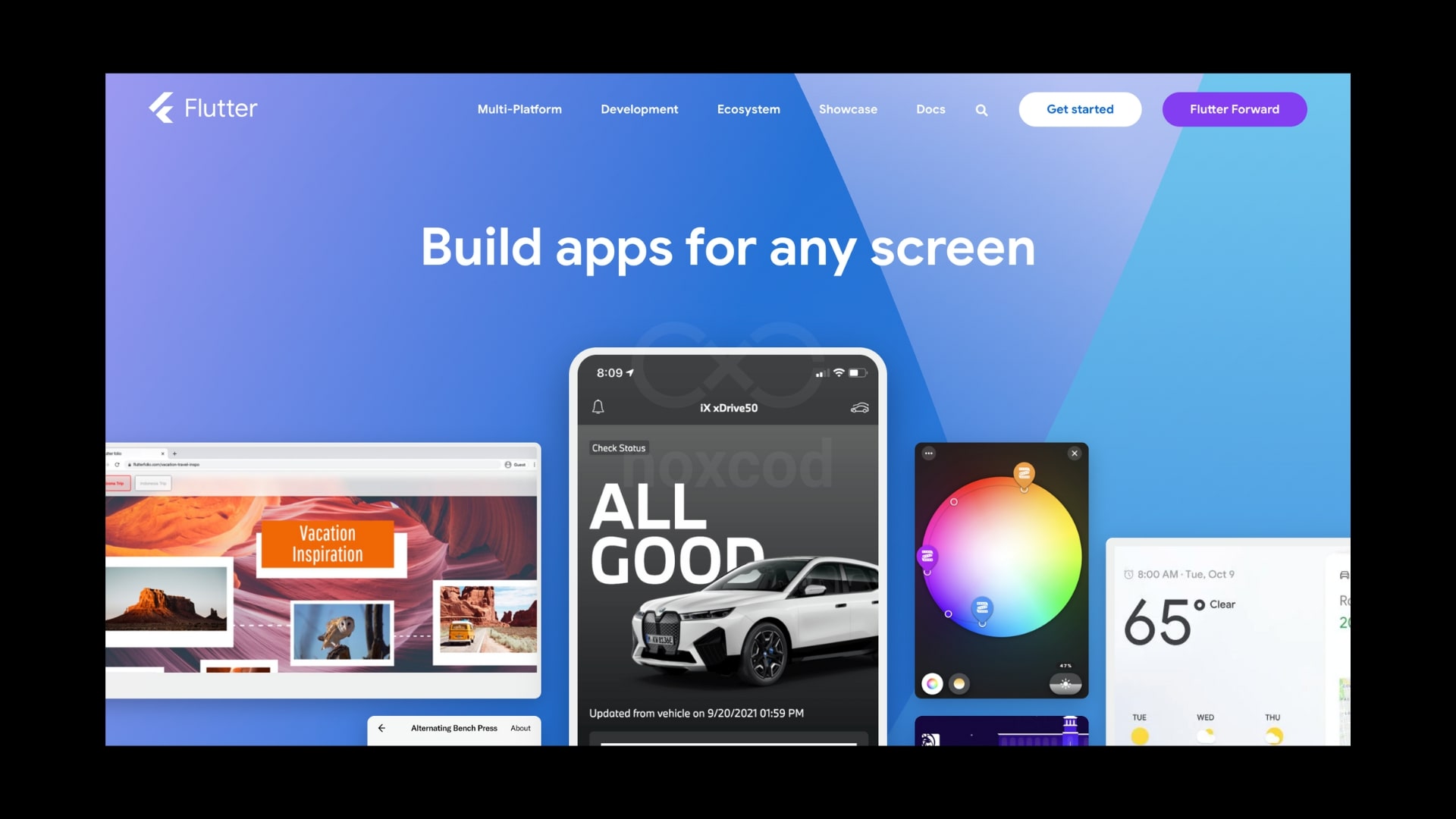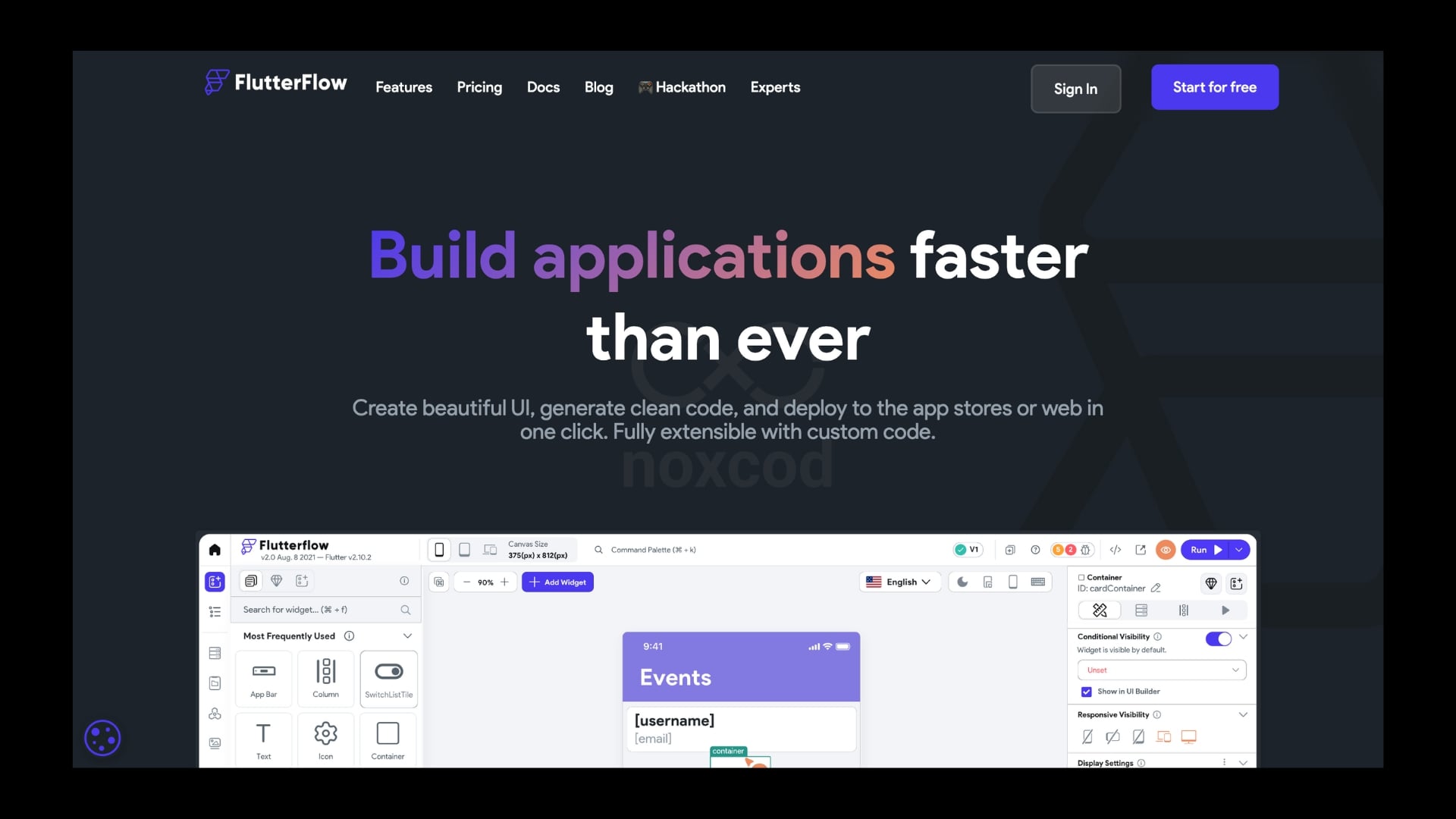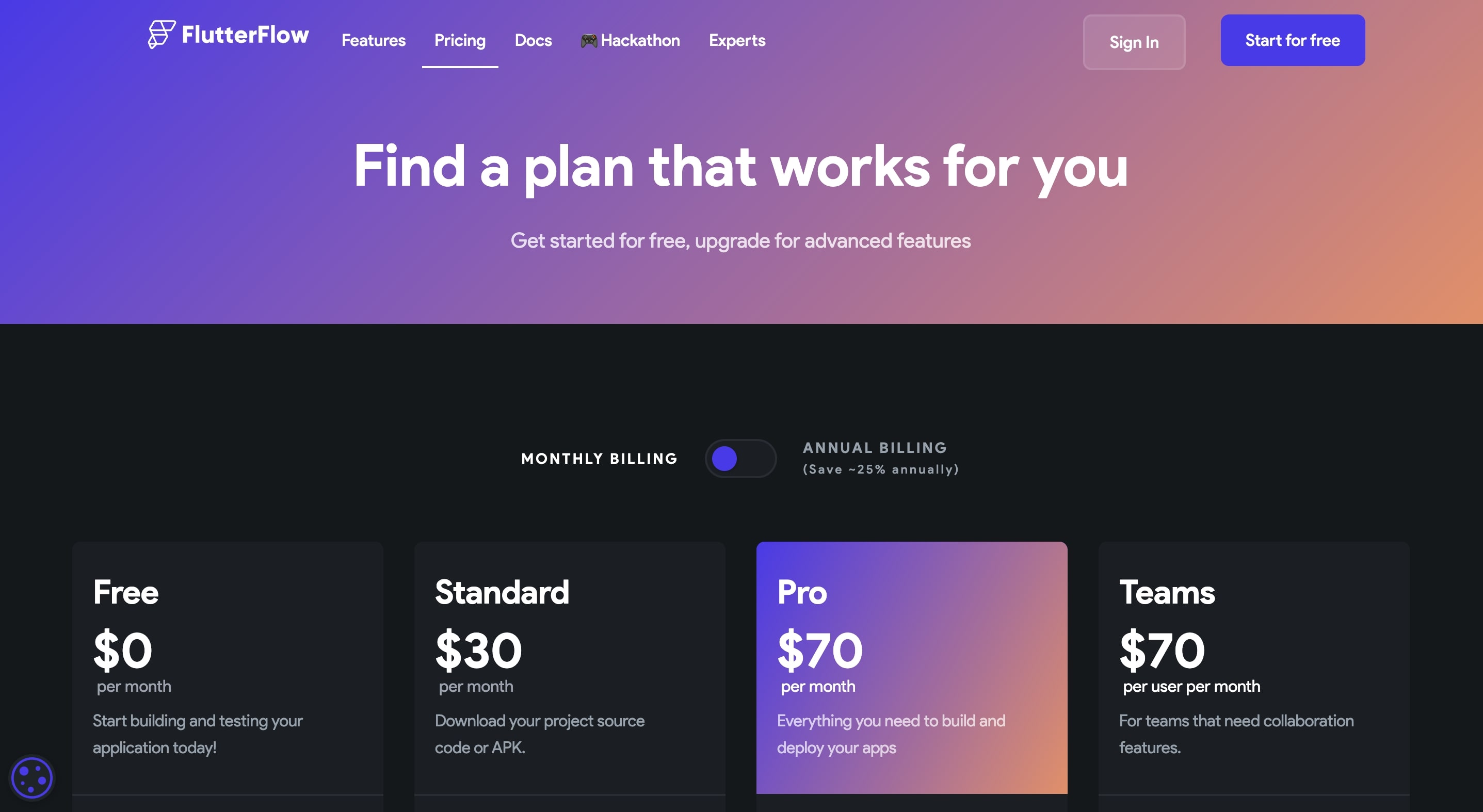FlutterFlow
What is FlutterFlow?
A story that resembles ours...
Like Noxcod, Flutter Flow was founded by two former colleagues from the same company who, in the fall of 2020, decided to embark on an adventure... creating their own company. (also in the No Code industry 😄)
Flutterflow's two founders are former Google engineers, Abel Mengistu and Alex Greaves.

After several years working for Google Maps, Abel and Alex founded Taste in late 2019. Taste was an AI-powered social app that recommended restaurants, “like Yelp and Google Maps, but better.” However, the app launched in March 2020, in the midst of a global pandemic, making developing a restaurant recommendation app nearly impossible.
By mid-2020, they were starting to get desperate... and they thought, 'This didn't work, we need to do something completely different.'
Before their first startup, they had virtually no experience building apps or front-end work, once Alex had built a website.
They found that they could create web platforms or web landing pages easily and quickly, but for them, there was no way to do it for mobile applications.
After their first failure, they didn't give up.
After presenting their new project to Flutter and in a first interview on Flutter's Reddit which earned them 900 upvotes in a short time (which is a lot for a start), they founded Flutterflow, in November 2020.
Thus, Flutter Flow , has become the fastest tool for building Low Code applications based on Flutter.
What is Flutter?

Flutter is a framework (an open-source toolkit) developed by Google. It allows you to create native cross-platform apps for iOS and Android, as well as websites and desktop applications.
Flutter is a very cost-effective toolkit, allowing anyone to quickly develop a mobile application or an MVP (Minimum Viable Product). Additionally, Flutter offers an excellent user experience and a wide range of widgets that make it very intuitive to use.
With a toolbox like Flutter, your production will be enhanced, as it offers everything from designs to native code. Finally, Flutter combines cost-effectiveness and security: it has many tested and secure plugins.
What is Flutterflow used for?

Flutterflow is a native low-code app builder built on Flutter. It's a simple builder: users can drag and drop basic elements to create an app. Flutterflow apps can connect to live data via Firebase or other APIs.
Flutterflow is a powerful tool that allows you to create applications 2 to 3 times faster than “classic” development tools.
FlutterFlow allows you to easily add advanced features like animations, push notifications, payments, and more. You can write your own custom code or create custom widgets for your app using FlutterFlow. Once your app is complete, you can export your code or deploy it directly to app stores.
In addition, the tool features a simple and modern design that makes it very pleasant to use.
Note that the platform is constantly being improved, as each month, Flutterflow unveils around ten new features in its newsletter. Each month, we explore these new features in the No Code news of the month, available on our blog .
FlutterFlow is also affordable, with reasonable price ranges.
Flutterflow Pricing

Flutterflow has a freemium model and its prices are reasonable. The tool is available in 4 different packages:
- Free at $0 per month, includes: basic platform features, pre-built templates, Firebase integration and 2 API endpoints;
- Standard at $30 per month, includes: basic platform features, pre-built templates, Firebase integration , 2 API endpoints, APK upload and code upload;
- Pro at $70 per month, includes: basic platform features, pre-built templates, Firebase integration, unlimited API endpoints, APK upload, code upload, GitHub integration, App & Play Store deployment, one-click app translations with Google Translate, and chat support;
- Teams at $70 per month, which includes the same options as the Pro plan, with managed billing and a shared design library.
FlutterFlow VS Bubble
According to one comparison tool, Capterra both gave Flutterflow and Bubble 4.5 out of 5, which is a good match. However, if you look at the details of their features, you'll notice some significant differences. This will be explained in more detail in a future article comparing the two tools.
For now, we will give you an overview of this comparison:
.jpeg)
FlutterFlow: Advantages
Flutterflow has many advantages:
- Low-code tool that lets you export code
- Animations (example: scroll) are native and directly available in Flutterflow
- Regular updates: each month, Flutterflow is able to release around ten new features, a real plus compared to Bubble.
- Precise and reassuring targets: applications, particularly mobile ones
- Good design: the tool is very pleasant to look at
FlutterFlow: Disadvantages
Flutterflow seems like a good tool at first glance, but when you look a little closer, you notice some flaws:
- For example, at the backend level, the tool uses Firebase, an external tool that centralizes backend development. The platform outsources this essential part of app creation, making it less efficient to use, and the same goes for databases. Not to mention debugging, which becomes complex.
- The tool is more complex than Bubble, as it uses low code, mixed code, and no code: it offers many more possibilities, but makes it more difficult to master.
- App-oriented tool, not SEO friendly
- Intended more for mobile apps than desktop apps, which can be a problem.
- Apps need to be updated every time they are pushed, making them slower and more complex to use.
Bubble: Advantages
Bubble is one of the oldest No-code tools and also has many advantages:
- Their technology is very advanced and allows them to develop quite technical platforms,
- The backend is directly integrated into the tool, unlike Flutterflow,
- Bubble benefits from its large community,
- The tool is also faster than Flutterflow
- Bubble centralizes its databases, its application and its backend itself
- Debugging is simplified,
- Adding apps for iOS and Android is a one-click, simple refresh.
Bubble: Disadvantages
Bubble has the largest market share of all no-code platforms and app builders, but it has some drawbacks:
- The animation is not as developed as on Flutterflow
- Over the years, Bubble has made fewer and fewer truly scalable updates: the tool is becoming increasingly stagnant.
- No code outsourcing
- Does not work offline
- Less fluid than Flutterflow
Conclusion
In conclusion, FlutterFlow is a powerful, intelligent, and constantly evolving low-code tool that deserves to be more powerful. Flutterflow is, without a doubt, one of the most competitive tools for building mobile apps in 2022.
We hope this article helped you learn more about Flutterflow. If you have any questions, you can find us in one of our Facebook groups:
Click here for the French group
Click here for the English group



